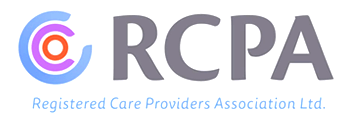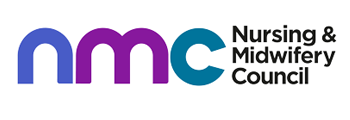
A nursing portfolio is one of the most important career tools you will need to possess as a nurse. As you progress during your nursing career, it's vital to keep an accurate and up-to-date record of your journey as a nurse. You will be able to maintain your educational, clinical, and professional achievements by creating a professional nursing portfolio. Thus, once you are done with nursing school and start applying for nurse jobs, you will need a professional portfolio. Even though nursing in the UK has plenty of nurse jobs available, you still can't ignore the competition in the field.
In this article, we will be explaining what a nursing portfolio is, how to create one, why it is important, and tips for creating a professional portfolio.
A professional nursing portfolio is a bit different from a normal resume or curriculum vitae, nurse staffing agency which simply outline your educational background and employment history. However, nursing portfolios go in-depth and provide potential employers with a breakdown of your education, nursing experience, skills, licensure, and professional accomplishments with supporting documents, such as copies of college transcripts, in-service attendance, an annual performance appraisal, a letter of recommendation, etc.
A well-thought-out nursing portfolio will assist you in presenting yourself for career openings and continuing education interviews. Most nurses prepare their nursing portfolios in a three-ring binder, although a digital copy is also advised. A professional nursing portfolio must include a cover page, table of contents, resume, and contact information, among other things.
There are several benefits to having a nurse portfolio in the UK, which include:
1. Licensure protection: In case you are involved in a lawsuit, showing that you have always adhered to your state's Nurse Practice Act will be your best defense.
2. Evidence of competence: Establish a strategic record of personal, academic, and professional activities and accomplishments over time. Moreover, it supports your claim that you completed the required number of CE/CEU hours. If your state demands documentation of continuing education for licence renewal, you have it at your fingertips, along with previous certificates.
3. Guide critical decisions related to personal choices and volunteer activities, goals for education and training, and professional opportunities.
4. Performance evaluations: Bring your performance review so that you can show evidence of how far you have met nurse job standards and even request assistance for requirements you haven't been able to meet, such as specific training for your positions.
5. Job interviews: During your interview for a promotion or for a new job, your nursing portfolio provides proof that you have kept up with the profession, sought out learning opportunities, and have had solid performance evaluations.
6. Career planning: Look at the topics you’ve studied, whether in formal classes, workshops, or CE/CEU hours. What has emerged regarding your interests? Your skills? What are your best traits, and what could be improved? It’s all there in your nursing portfolio.
Most of the nursing schools in the UK require nursing students to create a professional portfolio, as it helps the new nurses have an idea as to how to build one. The new nurses must keep in mind that their nursing portfolio might not be as in-depth as that of an experienced nurse.
Before you begin working on your nursing portfolio, you should gather supporting documentation. There is no correct or incorrect method for gathering your supporting materials. Always include information that demonstrates your competencies, such as educational accomplishments and talents. The following are the steps to creating a nursing portfolio:
It is preferable to categorise each component of your nurse portfolio, such as education, licences, CE/CEU, job, extra work/volunteering, achievements, and so on.
Gather all the relevant documents, such as transcripts, if you don't have a request for one. Make a copy of each document for a physical portfolio, and scan each document for digital or cloud storage.
If you are an experienced nurse, it is advisable to subdivide or archive some documents and keep recent years more accessible in case you need them for nurse job interviews or promotion applications.
If you are using a binder, make a title page, and if you are using expandable files, create a label. Either way, make it look professional with a business font and an attractive border. Don't use graphics or nurse icons.
Ensure you add the latest documents to the portfolio, thereby keeping it current and organised so that you are always ready to present it before the regulators in the UK.
Every six months or when you join a new nursing programme or job, organise your portfolio and take time to reflect on the content. Look through the nursing portfolio and see if it is showing you in a positive light, if anything is missing, if there is an educational gap, etc.
Include copies of the following documents in a binder or folder with dividers:
1. Personal information: Name, address, health records, proof of immunizations, etc.
2. Make a statement with your philosophy of nursing and future goals
3. Copies of your college transcripts
4. Copy of professional license(s)
5. Specialty certification(s)
6. Your job description
7. Proof of current BLS, ACLS, PALS, etc. with expiration dates
8. CE/CEU credits, with certificates and dates
9. Competency checklists
10. Professional awards
11. Publications, posters, and presentations
12. A letter of thanks/appreciation from patients, peers, or supervisors
13. Patient satisfaction surveys
14. Community volunteer work, professional or personal
15. Envelopes from important mailings
16. Certificates with renewal dates
There are various points to be kept in mind while creating a nursing portfolio, including:
1. Start by getting a three-ring binder to hold all of the information for your portfolio. It is recommended to plan a digital backup as well.
2. Create an outline of what needs to be included in your nursing portfolio. It is mostly up to the discretion of the person who is creating what needs to be included, but it is better to include challenges you have overcome as a nurse and some accomplishments. However, new nurses won't have much experience to add, but they can include any of the skills or knowledge they gained in nursing school.
3. Start by creating Word documents that break down each page of the portfolio, including the cover page, table of contents, and your resume.
4. Once all the pages are ready, print them and place them in a binder.
5. Save and store a digital copy of all the documents. Over time, as you gain more experience, you can add to your nursing portfolio.
Therefore, in order to advance in their nursing careers in the UK, nurses should prepare and maintain an up-to-date nursing portfolio. If you wish to work as an agency nurse in the UK, Nurses Group is your best option. We are the leading nursing staffing agency in the UK, and we have numerous job opportunities available.

Nurses Group became the most trusted healthcare agency by following the simple formula, we treat our clients like family. We aim to provide a quality and reliable healthcare service through our team of committed and experienced nursing staff.
Nurses Group is a family-owned and operated Healthcare Company with years of experience in the
UK healthcare industry. © Nurses Group, a division of JSS Healthcare Ltd. Registered in England
& Wales. Reg No. 09846338



© 2015-2026 nursesgroup.co.uk. Powered by John & Smith

